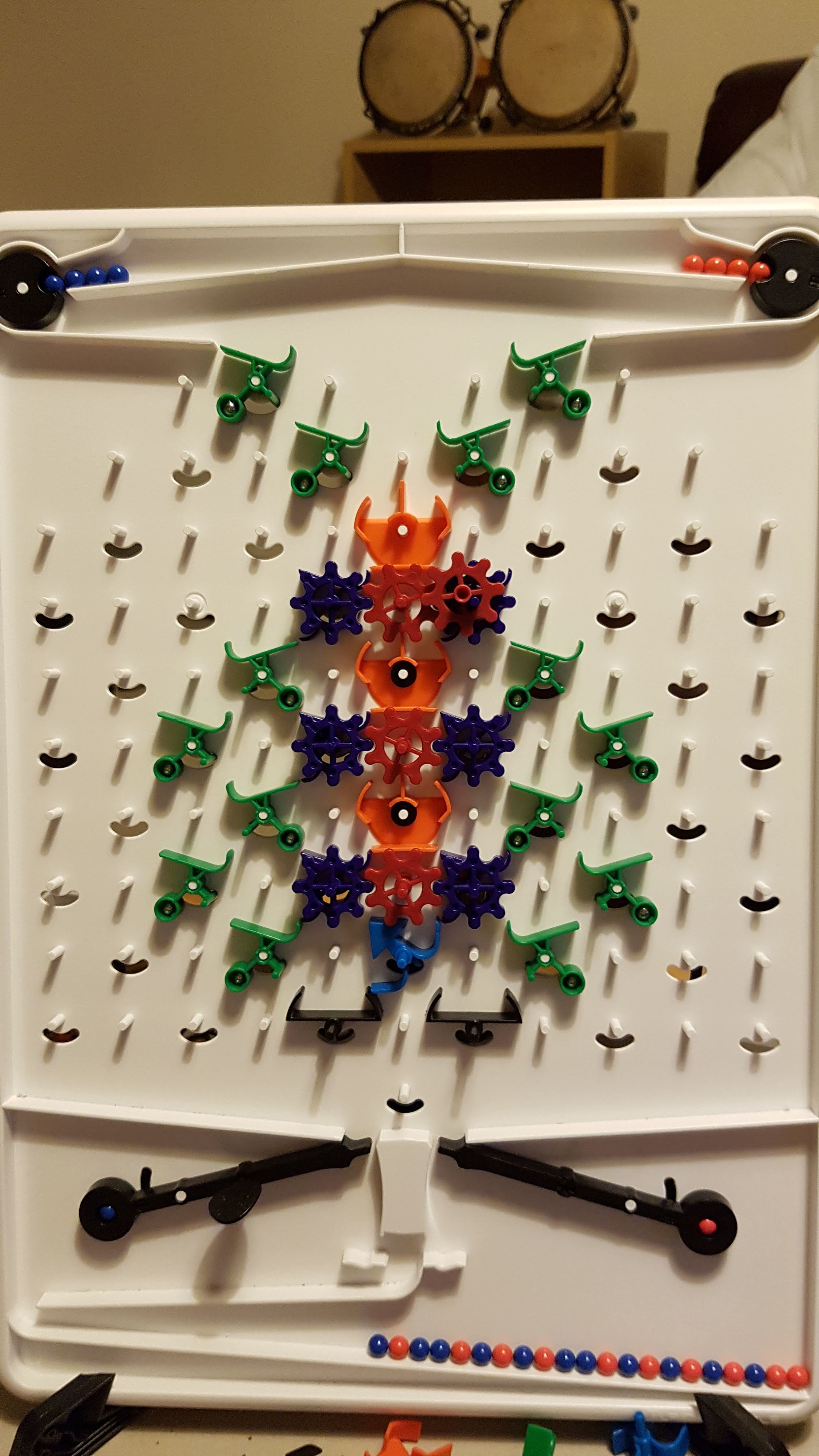Create a counter structure that can be incremented by releasing a blue marble, or decremented by releasing a red marble. Assume you’ve got enough parts of any type, and enough board space. Assume no overflows in either direction. For example, suppose the counter can represent up to the value 7. Then, assume that at all times 0 <= #blue-released minus #red-released <= 7, the counter should represent the #blues-released minus #reds released.
Note 1: I think this may be an important structure to prove Turing-completeness, following the strategy of creating a two-counter machine, which can simulate a TM assuming proper encoding of input and output. (https://en.wikipedia.org/wiki/Counter_machine#Two-counter_machines_are_Turing_equivalent_(with_a_caveat))
Note 2: I’ve got a solution, but am curious to see what others come up with.
Edit addendum:
Note 3: A more challenging version is to create an unbounded counter, assuming the board goes downward infinitely. Here, assume that a ball that falls to the bottom is intercepted.
Note 4: The original statement didn’t specify what should happen after the increment or decrement. It is fairly easy to just have balls intercepted. More interesting is to have them continue downward past your structure so they can be routed elsewhere and trigger more work as needed. The latter scenario is the basis for the solution to Note 3.


